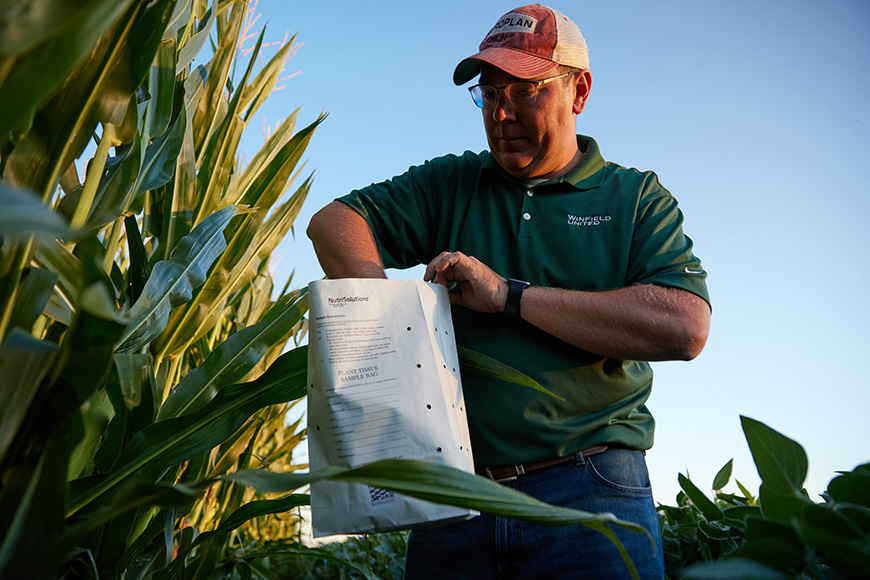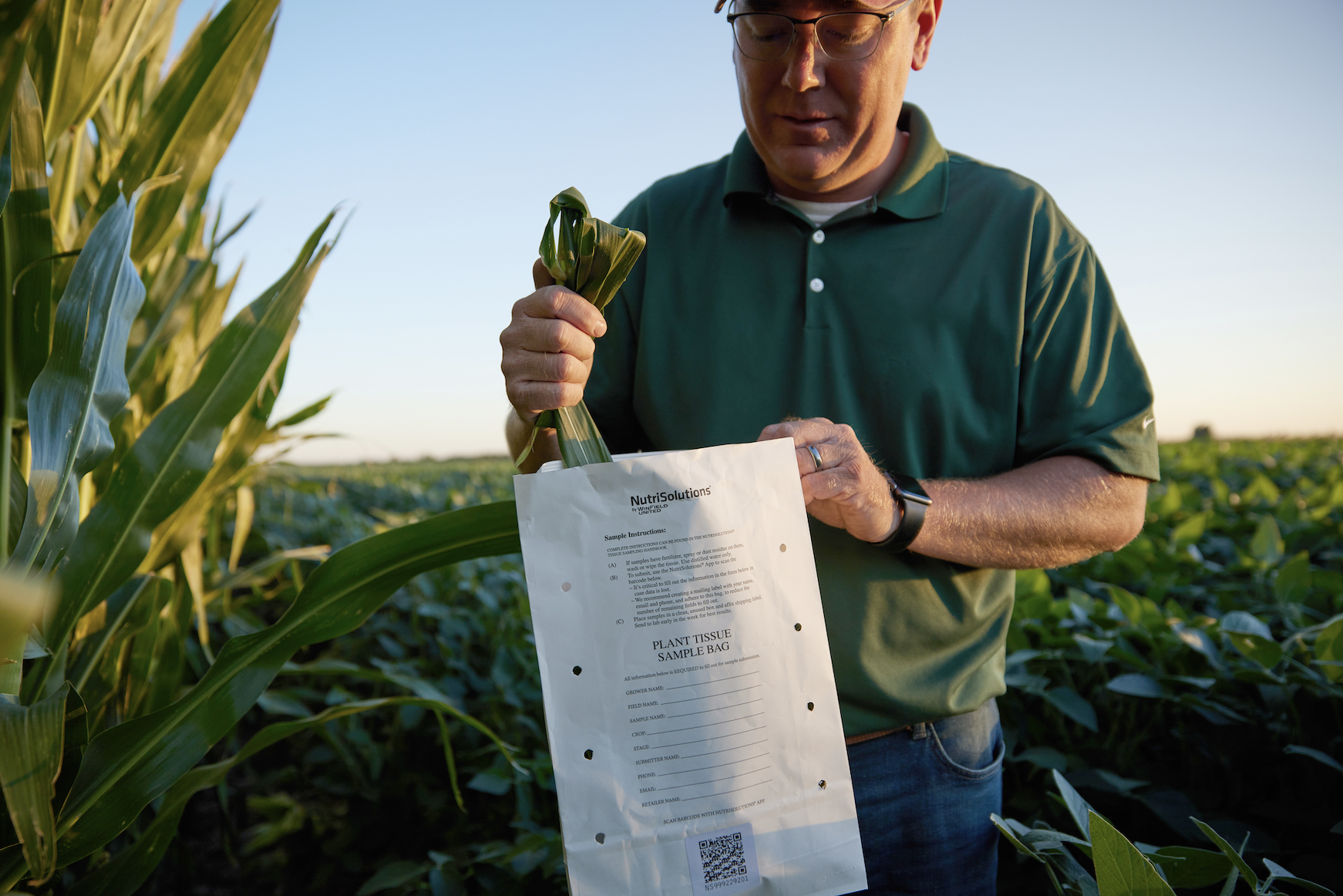2021 Plant Nutrition Trends

Rising fertilizer prices may be prompting you to reexamine your fertility plan for next season. Fortunately, your WinField® United retailer has the tools and data you need to make informed plant nutrition decisions. For example, reviewing Nutrient Trend Reports with your retailer is a good starting point to understand where there may have been gaps in your fertility program. As we reflect on 2021, we’re sharing a couple of interesting plant nutrition trends our data revealed.
Boron is a micronutrient needed in small quantities to promote proper cell wall formation and movement of sugars to the growing parts of the plant. It is a critical nutrient for successful pollination and seed set. Plants deficient in boron often have poor pollen vitality and may have fewer flowers and stunted root growth. An in-season foliar application of MAX-IN® Boron is an excellent way to supplement deficient crops.
Sulfur is essential for effective nitrogen utilization. To convert nitrogen to protein in the plant, it needs adequate sulfur. For high-yielding crops, a 10:1 ratio of nitrogen to sulfur is ideal. MAX-IN® Sulfur is a foliar-applied secondary nutrient that can help supplement sulfur deficient crops to promote effective nitrogen utilization.
Knowing whether a crop is deficient or sufficient on potassium isn’t enough. You should also consider your crop’s nitrogen to potassium ratio. Potassium helps carry nitrogen to the plant’s growing point. Without an adequate N:K ratio, plants can’t optimize kernel depth and yield. A NutriSolutions tissue test report will specify the N:K ratio of your field and provide a recommendation on how you can improve it. Typically, if the ratio is above 1.4-1.6, more potassium is needed. If it’s below 1.4, more nitrogen should be applied. MAX-IN® K is a foliar-applied micronutrient that can help supplement deficient crops with small amounts of potassium in-season.
Another key takeaway from 2021 is that you can’t look at nutrient deficiencies in a vacuum. Having the proper nutrient ratios helps the crop use nutrients more efficiently and effectively. The NutriSolutions tissue report displays important nutrient ratios based on your tissue samples, so you get a more holistic view of your crop’s nutritional profile. Nitrogen to sulfur and nitrogen to potassium are two essential ratios you should pay attention to when reviewing your tissue sampling results.
While every growing season presents different environmental conditions and challenges, trends from last season can help inform plans for 2022. Reviewing tissue and soil sampling data can help you identify where you need to adjust your fertility program for next season.
Contact your WinField United retailer for more information about fertility trends in your area.
All photos are either the property of WinField United or used with permission.
© 2021 WinField United. Important: Before use always read and follow label instructions. Crop performance is dependent on several factors many of which are beyond the control of WinField United, including without limitation, soil type, pest pressures, agronomic practices and weather conditions. Growers are encouraged to consider data from multiple locations, over multiple years and to be mindful of how such agronomic conditions could impact results. NutriSolutions, MAX-IN, R7 and WinField are trademarks of WinField United. All other trademarks are the property of their respective owners.
Dry weather limited boron uptake.
As we analyzed tissue samples taken at the V4 to V5 growth stages in corn, we noticed boron deficiencies in moisture-limited crops early in the season. Boron is taken up via mass flow, which requires adequate soil moisture. If you took soil samples and saw sufficient levels of available boron, you may have been caught off-guard by tissue samples that showed deficiencies. Unfortunately, dry soil conditions make it more difficult for a plant to uptake soil nutrients. In that case, supplemental in-season nutrient applications may be required to meet plant nutrition requirements.Boron is a micronutrient needed in small quantities to promote proper cell wall formation and movement of sugars to the growing parts of the plant. It is a critical nutrient for successful pollination and seed set. Plants deficient in boron often have poor pollen vitality and may have fewer flowers and stunted root growth. An in-season foliar application of MAX-IN® Boron is an excellent way to supplement deficient crops.
Late-season sulfur deficiencies in corn.
One surprising trend we saw in 2021 was late-season sulfur deficiencies in corn. Sulfur is needed in larger quantities than micronutrients, and some farmers may not have used appropriate sources or rates to meet plant needs last season. For example, elemental sulfur sources, like gypsum, aren’t very water soluble. Under dry conditions that were common in some fields in 2021, plant uptake is limited. That could be one of the reasons we saw more late-season sulfur deficiencies in corn than in an average year.Sulfur is essential for effective nitrogen utilization. To convert nitrogen to protein in the plant, it needs adequate sulfur. For high-yielding crops, a 10:1 ratio of nitrogen to sulfur is ideal. MAX-IN® Sulfur is a foliar-applied secondary nutrient that can help supplement sulfur deficient crops to promote effective nitrogen utilization.
Potassium shortages were common prior to corn tasseling.
Another consequence of dry weather was potassium shortages in late vegetative stage corn. Since potassium is taken up via diffusion, dry soil conditions favor potassium deficiencies, as many corn crops experienced in 2021. Potassium is essential for regulating water and carbohydrate movement in plants, and deficiencies can lead to poor standability and reduced stress tolerance.Knowing whether a crop is deficient or sufficient on potassium isn’t enough. You should also consider your crop’s nitrogen to potassium ratio. Potassium helps carry nitrogen to the plant’s growing point. Without an adequate N:K ratio, plants can’t optimize kernel depth and yield. A NutriSolutions tissue test report will specify the N:K ratio of your field and provide a recommendation on how you can improve it. Typically, if the ratio is above 1.4-1.6, more potassium is needed. If it’s below 1.4, more nitrogen should be applied. MAX-IN® K is a foliar-applied micronutrient that can help supplement deficient crops with small amounts of potassium in-season.
Key learnings from 2021
One thing that was clear this season is that hybrids and varieties are more stress tolerant than ever before. It pays to continue investing in them in-season even if it seems like environmental conditions won’t favor high-yielding crops. Despite the lack of moisture, farmers who stuck to their fertility plans in 2021 were generally rewarded with respectable yields.Another key takeaway from 2021 is that you can’t look at nutrient deficiencies in a vacuum. Having the proper nutrient ratios helps the crop use nutrients more efficiently and effectively. The NutriSolutions tissue report displays important nutrient ratios based on your tissue samples, so you get a more holistic view of your crop’s nutritional profile. Nitrogen to sulfur and nitrogen to potassium are two essential ratios you should pay attention to when reviewing your tissue sampling results.
Planning fertility for 2022
If fertilizer prices have you rethinking your strategy for next season, data-backed decisions will be critical to optimizing yield potential while controlling input costs. Your WinField United retailer can use response-to nitrogen scores to help you evaluate which of your hybrids need more nitrogen and where you may be able to cut back to reduce nitrogen costs. This approach is more economical and effective than dropping nitrogen rates across all your fields.While every growing season presents different environmental conditions and challenges, trends from last season can help inform plans for 2022. Reviewing tissue and soil sampling data can help you identify where you need to adjust your fertility program for next season.
Contact your WinField United retailer for more information about fertility trends in your area.
All photos are either the property of WinField United or used with permission.
© 2021 WinField United. Important: Before use always read and follow label instructions. Crop performance is dependent on several factors many of which are beyond the control of WinField United, including without limitation, soil type, pest pressures, agronomic practices and weather conditions. Growers are encouraged to consider data from multiple locations, over multiple years and to be mindful of how such agronomic conditions could impact results. NutriSolutions, MAX-IN, R7 and WinField are trademarks of WinField United. All other trademarks are the property of their respective owners.





